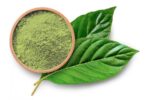Time for a Natural Alternative to Prescription Drugs: Safe and Effective Herbal Supplements
by: Robert Engle, Director of Public Relations, World Coalition for Botanical Development (WCBD)
WASHINGTON–(BUSINESS WIRE)–The following is an opinion editorial provided by Robert Engle, Director of Public Relations, World Coalition for Botanical Development (WCBD)
Further, more people are taking five or more drugs at once. In 1999, 8.2 percent of adults did. In 2011, 15 percent of adults did. The research found that it is particularly notable among older adults 65 and older — that’s 39 percent of the age group. Another issue with pharmaceuticals is that they are one of the leading causes of death in this country, killing one American every 19 minutes — as well as a major cause of emergency room visits.
We at the World Coalition for Botanical Development (WCBD) are shocked at these numbers and believe that safe, natural alternatives are an answer to the spike in pharmaceutical over-treatment for so many ailments. A particular focus is the continued availability of kratom as an effective natural supplement. Kratom, a 100 percent natural plant and herbal supplement from Southeast Asia, has been used safely for hundreds of years as a natural analgesic, muscle relaxer, anti-inflammatory, antioxidant, and opioid withdrawal treatment.
Dr. Phil Schoenwetter, a family practitioner in Southern California, saw first hand the “stunning” benefits kratom had in treating his wife’s severe migraines, which before required heavy doses of prescription medications.
“This was the clarion call to wake up, smell the coffee (another botanical) and delve more deeply into natural agents and understand mechanisms of action and implement in my family medicine practice,” he said. “Kratom now is a ‘must have’ adjunct to numerous long term conditions and its role in my practice already exceeds ‘usual and customary’ uses.”
Another kratom advocate in the medical profession is Dr. Gerald Wall, a retired New Jersey pharmacist. He discovered kratom while searching for a holistic and alternative cure for chronic fatigue and a near life-time of severe pain in his legs. As a pharmacist, he had access to all kinds of pain pharmaceuticals, and like many, didn’t like their side effects. “With kratom there are no negative side effects or responses,” he said.
He found that with kratom, he could move with no pain, had increased energy and stamina, and could exercise vigorously.
Ryan Estevez, MD, PhD, MPH is a psychiatrist and psychopharmacologist who has worked for years in emergency rooms, community health centers, and prisons adds: “In fact, there is emerging evidence that kratom can be helpful in alleviating symptoms of opioid withdrawal.”
So, instead of the usual medical industry knee-jerk reaction in prescribing drugs for all ailments, let’s focus on beneficial, 100 percent natural botanicals that have proven remedies and could help many, many more.
Contacts
for WCBD
Robert Engle, 703-347-3784
eMail Robert






